Electrical
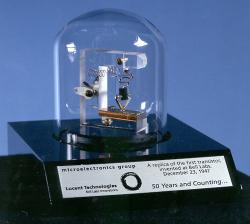
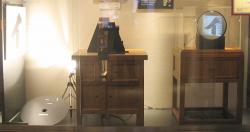
Professor Kenjiro Takayanagi started his research program in television at Hamamatsu Technical College (now Shizuoka University) in 1924. He transmitted an image of the Japanese character イ(i) on a cathode-ray tube on 25 December 1926 and broadcast video over an electronic television system in 1935. His work, patents, articles, and teaching helped lay the foundation for the rise of Japanese television and related industries to global leadership.
The milestone plaque may be viewed at the site of the research at Hamamatsu Technical College (now Shizuoka University).
YearAdded:
Image Credit: Courtesy Wikipedia/sphlImage Caption: A recreation of Professor Takayanagi's first demonstration of television on display at Shizuoka University.Era_date_from: 1924
2009

The Tokaido Shinkansen, the world's first inter-city, high-speed railway system, began operations on its route of over 500 kilometers between Tokyo and Osaka more than thirty years ago, in 1964. After its establishment, the Tokaido Shinkansen made a major contribution to Japan's rapid post-war economic growth as the country's principal transportation artery. Today (1997), more than two hundred and eighty Shinkansen trains operate between Tokyo and Osaka each day, with eleven departures an hour at peak times, and a daily ridership of more than 360,000 passengers.
YearAdded:
Image Caption: JR Central 700 Series Shinkansen set C40 on the Tōkaidō Shinkansen between Kakegawa and Shizuoka StationEra_date_from: 1964
2000
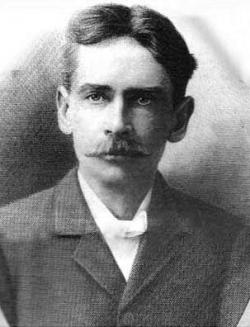
"On 20 March 1886 William Stanley provided alternating current electrification to offices and stores on Main Street in Great Barrington, Massachusetts.
YearAdded:
Image Caption: Alternating Current ElectrificationEra_date_from: 1886
2004
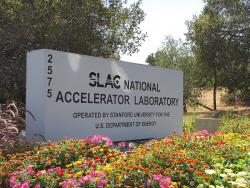
The basic research tool at SLAC is an intense beam of electrons that have been accelerated by an electric field equivalent to 30 billion volts, making this the most powerful electron beam in the world.
The two-mile linear accelerator produces this field using high-power microwaves traveling through an evacuated waveguide. Electrons injected into one end of this pipe are continuously accelerated by this traveling field to very high energies.
YearAdded:
Image Credit: Courtesy Wikipedia/Jvimal (CC BY 3.0)Image Caption: Stanford Linear Accelerator Center (SLAC)Era_date_from: 1962
1984

"The Alexanderson radio alternator was a high-power, radio-frequency source which provided reliable transoceanic radiotelegraph communication during and after World War I. Ernst F.W. Alexanderson (1878-1975), a General Electric engineer, designed radio alternators with a frequency range to 100 kHz and a power capability from 2 kW to 200 kW.
YearAdded:
Image Credit: Public Domain; Produced prior to 1/1/1923Image Caption: Alexanderson Radio AlternatorEra_date_from: 1904
1992
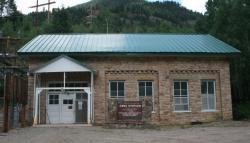
"Electricity produced here in the spring of 1891 was transmitted 2.6 miles over rugged and at times inaccessible terrain to provide power for operating the motor-driven mill at the Gold King Mine. This pioneering demonstration of the practical value of transmitting electrical power was a significant precedent in the United States for much larger plants at Niagara Falls (in 1895) and elsewhere. Electricity at Ames was generated at 3000 volts, 133 Hertz, single-phase AC, by a 100-hp Westinghouse alternator."
YearAdded:
Image Credit: Courtesy Wikipedia/Ray Wood (CC BY-SA 3.0) Image Caption: The Ames Hydroelectric Generating Plant, and behind it the trees of the Uncompahgre National ForestEra_date_from: 1891
1988
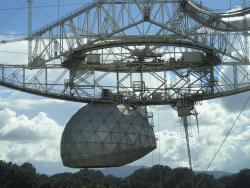
The Arecibo Observatory has the largest radio telescope ever constructed. Maintaining the greatest electromagnetic wave gathering capacity of any telescope, it has been an essential tool in modern astronomy, ionosphere and planetary studies. Several feats of mechanical engineering went into the construction of this observatory, most notable of which is a drive system which allows all active parts of the antenna to be kept focused with millimeter precision regardless of environmental factors—such as thermal expansion.
YearAdded:
Image Caption: NAIC/Arecibo RadiotelescopeEra_date_from: 1963
2001
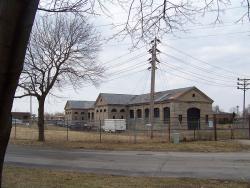
When the Adams Plant went into operation on August 26, 1895, it represented a key victory for alternating-current systems over direct-current. The clear advantage of high voltage AC for long distance power transmission and the unprecedented size of the plant (it reached its full capacity of ten 5,000-HP generators in May 1900) influenced the future of the electrical industry worldwide.
In August 1895 the Adams No. 1 generating station of the Niagara Falls Power Company first supplied electric power to local industries in Niagara Falls, New York.
YearAdded:
Image Credit: Courtesy Wikipedia/Lvklock (CC BY-SA 3.0)Image Caption: Adams Hydroelectric Generating PlantEra_date_from: 1895
1990
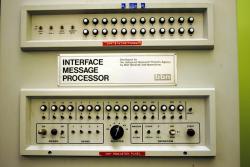
"At 10:30 p.m., 29 October 1969, the first ARPANET message was sent from this UCLA site to the Stanford Research Institute. Based on packet switching and dynamic resource allocation, the sharing of information digitally from this first node of ARPANET launched the Internet revolution."
(The plaque can be seen at the UCLA Henry Samueli School of Engineering and Applied Sciences, 405 Hilgard Ave., Los Angeles, California, U.S.A.)
The deployment of the ARPANET set in motion a train of developments that led to the Internet as we know it today.
YearAdded:
Image Credit: Courtesy Flickr/FastLizard4 (CC BY-SA 2.0)Image Caption: The original Interface Message Processor, a primitive router, and considered widely to be the beginning (or "birth") of the internetEra_date_from: 1969
2009
Innovations

"Driven by the need to understand the characteristics of radio communication in Canada's North, Canadian researchers focused on the exploration of the earth's upper atmosphere, the ionosphere. Canada's satellite program commenced with the launch of Alouette-I on September 29, 1962. Alouette-II… Read More
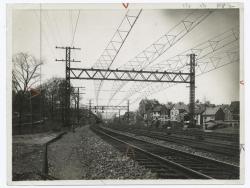
This was a pioneering venture in mainline railroad electrification. It established single-phase alternating current as a technical and economical alternative to direct current. This concept exerted considerable influence over subsequent systems both in the United States and abroad. The major…
Read More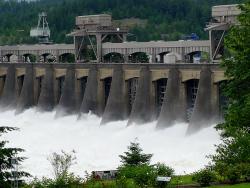
The Bonneville Dam, Columbia River Power and Navigation System consists of 55 major projects on Oregon's Columbia River and is said to be the largest hydroelectric system in the world.
The Columbia River forms part of the border between Washington and Oregon and flows inland through the…
Read More
"Benjamin Franklin, American electrician, printer, and diplomat, spent many years on Craven Street. He lived at No. 7 between 1772 and 1775 and at No. 36 from 1757-1762 and again from 1764-1772. During these years, Franklin popularized the study of electricity, performed experiments, and served as… Read More
In 1751 Benjamin Franklin published “Experiments and Observations on Electricity, Made at Philadelphia in America.”
Experiments summarized in this booklet determined the existence of positive and negative charges, and the difference between insulators and conductors. This work led to the invention… Read More
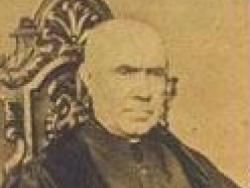
A pioneer in the development of electrical science, Nicholas Joseph Callan was born on 22 December 1799 in Darver, Ireland. He started the priesthood at Navan Seminary, and continued his studies at St. Patrick’s College Maynooth, where he studied natural and experimental philosophy under Dr.… Read More

The 1992 Nobel Prize in physics was awarded to Georges Charpak, France, for his invention and development of detectors in high energy physics. Since 1959 Charpak had worked at CERN, the European laboratory for particle physics situated in the canton of Geneva in Switzerland. Charpak invented the…
Read More
"SPICE (Simulation Program with Integrated Circuit Emphasis) was created at UC Berkeley as a class project in 1969-1970. It evolved to become the worldwide standard integrated circuit simulator. SPICE has been used to train many students in the intricacies of circuit simulation. SPICE and its… Read More
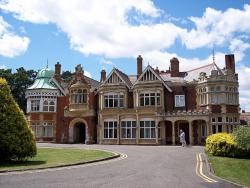
On this site during the 1939-45 World War, 12,000 men and women broke the German Lorenz and Enigma ciphers, as well as Japanese and Italian codes and ciphers. They used innovative mathematical analysis and were assisted by two computing machines developed here by teams led by Alan Turing: the… Read More

The Decew Falls Hydro-Electric Development was a pioneering project in the generation and transmission of electrical energy at higher voltages and at greater distances in Canada. On 25 August 1898 this station transmitted power at 22,500 Volts, 66 2/3 Hz, two-phase, a distance of 56 km to…
Read More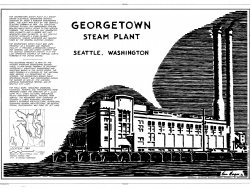
The Georgetown Steam Plant, a surprisingly complete and operable steam power plant after a career of nearly seventy-five years, was built in the early 1900s when Seattle's inexpensive hydroelectric power attracted manufacturers. Much of the power produced at this plant operated the streetcars.…
Read More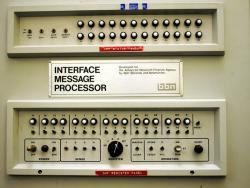
"At 10:30 p.m., 29 October 1969, the first ARPANET message was sent from this UCLA site to the Stanford Research Institute. Based on packet switching and dynamic resource allocation, the sharing of information digitally from this first node of ARPANET launched the Internet revolution."
(The plaque… Read More

When the Adams Plant went into operation on August 26, 1895, it represented a key victory for alternating-current systems over direct-current. The clear advantage of high voltage AC for long distance power transmission and the unprecedented size of the plant (it reached its full capacity of ten 5,… Read More
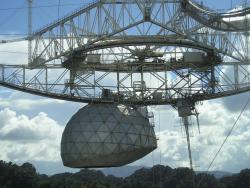
The Arecibo Observatory has the largest radio telescope ever constructed. Maintaining the greatest electromagnetic wave gathering capacity of any telescope, it has been an essential tool in modern astronomy, ionosphere and planetary studies. Several feats of mechanical engineering went into the…
Read More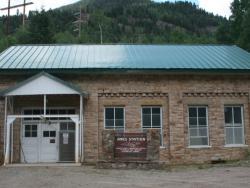
Read More"Electricity produced here in the spring of 1891 was transmitted 2.6 miles over rugged and at times inaccessible terrain to provide power for operating the motor-driven mill at the Gold King Mine. This pioneering demonstration of the practical value of transmitting electrical power…
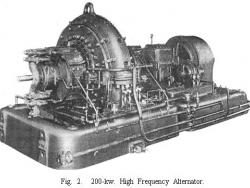
"The Alexanderson radio alternator was a high-power, radio-frequency source which provided reliable transoceanic radiotelegraph communication during and after World War I. Ernst F.W. Alexanderson (1878-1975), a General Electric engineer, designed radio alternators with a frequency range to 100 kHz… Read More
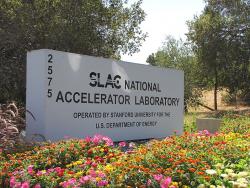
The basic research tool at SLAC is an intense beam of electrons that have been accelerated by an electric field equivalent to 30 billion volts, making this the most powerful electron beam in the world.
The two-mile linear accelerator produces this field using high-power microwaves…
Read More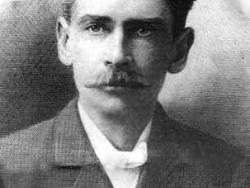
"On 20 March 1886 William Stanley provided alternating current electrification to offices and stores on Main Street in Great Barrington, Massachusetts. He thus demonstrated the first practical system for providing electrical illumination using alternating current with transformers to adjust voltage… Read More

The Tokaido Shinkansen, the world's first inter-city, high-speed railway system, began operations on its route of over 500 kilometers between Tokyo and Osaka more than thirty years ago, in 1964. After its establishment, the Tokaido Shinkansen made a major contribution to Japan's rapid post-war…
Read More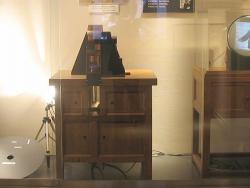
Professor Kenjiro Takayanagi started his research program in television at Hamamatsu Technical College (now Shizuoka University) in 1924. He transmitted an image of the Japanese character イ(i) on a cathode-ray tube on 25 December 1926 and broadcast video over an electronic television system in 1935… Read More


